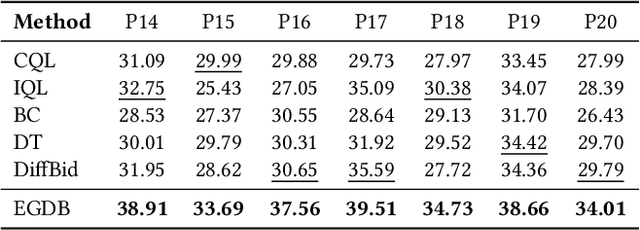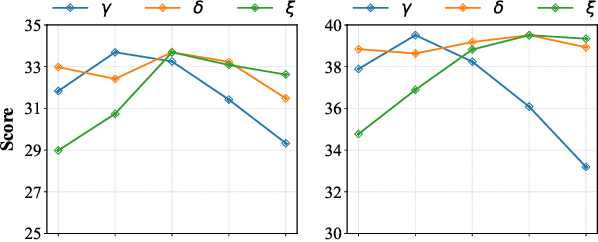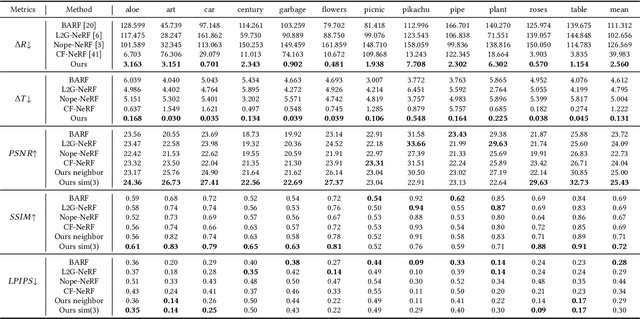Jiahao Sun
An LLM-LVLM Driven Agent for Iterative and Fine-Grained Image Editing
Aug 24, 2025



Abstract:Despite the remarkable capabilities of text-to-image (T2I) generation models, real-world applications often demand fine-grained, iterative image editing that existing methods struggle to provide. Key challenges include granular instruction understanding, robust context preservation during modifications, and the lack of intelligent feedback mechanisms for iterative refinement. This paper introduces RefineEdit-Agent, a novel, training-free intelligent agent framework designed to address these limitations by enabling complex, iterative, and context-aware image editing. RefineEdit-Agent leverages the powerful planning capabilities of Large Language Models (LLMs) and the advanced visual understanding and evaluation prowess of Vision-Language Large Models (LVLMs) within a closed-loop system. Our framework comprises an LVLM-driven instruction parser and scene understanding module, a multi-level LLM-driven editing planner for goal decomposition, tool selection, and sequence generation, an iterative image editing module, and a crucial LVLM-driven feedback and evaluation loop. To rigorously evaluate RefineEdit-Agent, we propose LongBench-T2I-Edit, a new benchmark featuring 500 initial images with complex, multi-turn editing instructions across nine visual dimensions. Extensive experiments demonstrate that RefineEdit-Agent significantly outperforms state-of-the-art baselines, achieving an average score of 3.67 on LongBench-T2I-Edit, compared to 2.29 for Direct Re-Prompting, 2.91 for InstructPix2Pix, 3.16 for GLIGEN-based Edit, and 3.39 for ControlNet-XL. Ablation studies, human evaluations, and analyses of iterative refinement, backbone choices, tool usage, and robustness to instruction complexity further validate the efficacy of our agentic design in delivering superior edit fidelity and context preservation.
Expert-Guided Diffusion Planner for Auto-bidding
Aug 12, 2025



Abstract:Auto-bidding is extensively applied in advertising systems, serving a multitude of advertisers. Generative bidding is gradually gaining traction due to its robust planning capabilities and generalizability. In contrast to traditional reinforcement learning-based bidding, generative bidding does not rely on the Markov Decision Process (MDP) exhibiting superior planning capabilities in long-horizon scenarios. Conditional diffusion modeling approaches have demonstrated significant potential in the realm of auto-bidding. However, relying solely on return as the optimality condition is weak to guarantee the generation of genuinely optimal decision sequences, lacking personalized structural information. Moreover, diffusion models' t-step autoregressive generation mechanism inherently carries timeliness risks. To address these issues, we propose a novel conditional diffusion modeling method based on expert trajectory guidance combined with a skip-step sampling strategy to enhance generation efficiency. We have validated the effectiveness of this approach through extensive offline experiments and achieved statistically significant results in online A/B testing, achieving an increase of 11.29% in conversion and a 12.35% in revenue compared with the baseline.
Revisiting Adversarial Patch Defenses on Object Detectors: Unified Evaluation, Large-Scale Dataset, and New Insights
Aug 01, 2025



Abstract:Developing reliable defenses against patch attacks on object detectors has attracted increasing interest. However, we identify that existing defense evaluations lack a unified and comprehensive framework, resulting in inconsistent and incomplete assessments of current methods. To address this issue, we revisit 11 representative defenses and present the first patch defense benchmark, involving 2 attack goals, 13 patch attacks, 11 object detectors, and 4 diverse metrics. This leads to the large-scale adversarial patch dataset with 94 types of patches and 94,000 images. Our comprehensive analyses reveal new insights: (1) The difficulty in defending against naturalistic patches lies in the data distribution, rather than the commonly believed high frequencies. Our new dataset with diverse patch distributions can be used to improve existing defenses by 15.09% AP@0.5. (2) The average precision of the attacked object, rather than the commonly pursued patch detection accuracy, shows high consistency with defense performance. (3) Adaptive attacks can substantially bypass existing defenses, and defenses with complex/stochastic models or universal patch properties are relatively robust. We hope that our analyses will serve as guidance on properly evaluating patch attacks/defenses and advancing their design. Code and dataset are available at https://github.com/Gandolfczjh/APDE, where we will keep integrating new attacks/defenses.
AIArena: A Blockchain-Based Decentralized AI Training Platform
Dec 19, 2024Abstract:The rapid advancement of AI has underscored critical challenges in its development and implementation, largely due to centralized control by a few major corporations. This concentration of power intensifies biases within AI models, resulting from inadequate governance and oversight mechanisms. Additionally, it limits public involvement and heightens concerns about the integrity of model generation. Such monopolistic control over data and AI outputs threatens both innovation and fair data usage, as users inadvertently contribute data that primarily benefits these corporations. In this work, we propose AIArena, a blockchain-based decentralized AI training platform designed to democratize AI development and alignment through on-chain incentive mechanisms. AIArena fosters an open and collaborative environment where participants can contribute models and computing resources. Its on-chain consensus mechanism ensures fair rewards for participants based on their contributions. We instantiate and implement AIArena on the public Base blockchain Sepolia testnet, and the evaluation results demonstrate the feasibility of AIArena in real-world applications.
SoK: Decentralized AI (DeAI)
Nov 26, 2024Abstract:The centralization of Artificial Intelligence (AI) poses significant challenges, including single points of failure, inherent biases, data privacy concerns, and scalability issues. These problems are especially prevalent in closed-source large language models (LLMs), where user data is collected and used without transparency. To mitigate these issues, blockchain-based decentralized AI (DeAI) has emerged as a promising solution. DeAI combines the strengths of both blockchain and AI technologies to enhance the transparency, security, decentralization, and trustworthiness of AI systems. However, a comprehensive understanding of state-of-the-art DeAI development, particularly for active industry solutions, is still lacking. In this work, we present a Systematization of Knowledge (SoK) for blockchain-based DeAI solutions. We propose a taxonomy to classify existing DeAI protocols based on the model lifecycle. Based on this taxonomy, we provide a structured way to clarify the landscape of DeAI protocols and identify their similarities and differences. We analyze the functionalities of blockchain in DeAI, investigating how blockchain features contribute to enhancing the security, transparency, and trustworthiness of AI processes, while also ensuring fair incentives for AI data and model contributors. In addition, we identify key insights and research gaps in developing DeAI protocols, highlighting several critical avenues for future research.
Multi-Continental Healthcare Modelling Using Blockchain-Enabled Federated Learning
Oct 23, 2024



Abstract:One of the biggest challenges of building artificial intelligence (AI) model in healthcare area is the data sharing. Since healthcare data is private, sensitive, and heterogeneous, collecting sufficient data for modelling is exhausted, costly, and sometimes impossible. In this paper, we propose a framework for global healthcare modelling using datasets from multi-continents (Europe, North America and Asia) while without sharing the local datasets, and choose glucose management as a study model to verify its effectiveness. Technically, blockchain-enabled federated learning is implemented with adaption to make it meet with the privacy and safety requirements of healthcare data, meanwhile rewards honest participation and penalize malicious activities using its on-chain incentive mechanism. Experimental results show that the proposed framework is effective, efficient, and privacy preserved. Its prediction accuracy is much better than the models trained from limited personal data and is similar to, and even slightly better than, the results from a centralized dataset. This work paves the way for international collaborations on healthcare projects, where additional data is crucial for reducing bias and providing benefits to humanity.
Privacy Preserved Blood Glucose Level Cross-Prediction: An Asynchronous Decentralized Federated Learning Approach
Jun 21, 2024



Abstract:Newly diagnosed Type 1 Diabetes (T1D) patients often struggle to obtain effective Blood Glucose (BG) prediction models due to the lack of sufficient BG data from Continuous Glucose Monitoring (CGM), presenting a significant "cold start" problem in patient care. Utilizing population models to address this challenge is a potential solution, but collecting patient data for training population models in a privacy-conscious manner is challenging, especially given that such data is often stored on personal devices. Considering the privacy protection and addressing the "cold start" problem in diabetes care, we propose "GluADFL", blood Glucose prediction by Asynchronous Decentralized Federated Learning. We compared GluADFL with eight baseline methods using four distinct T1D datasets, comprising 298 participants, which demonstrated its superior performance in accurately predicting BG levels for cross-patient analysis. Furthermore, patients' data might be stored and shared across various communication networks in GluADFL, ranging from highly interconnected (e.g., random, performs the best among others) to more structured topologies (e.g., cluster and ring), suitable for various social networks. The asynchronous training framework supports flexible participation. By adjusting the ratios of inactive participants, we found it remains stable if less than 70% are inactive. Our results confirm that GluADFL offers a practical, privacy-preserving solution for BG prediction in T1D, significantly enhancing the quality of diabetes management.
An Empirical Study of Training State-of-the-Art LiDAR Segmentation Models
May 23, 2024Abstract:In the rapidly evolving field of autonomous driving, precise segmentation of LiDAR data is crucial for understanding complex 3D environments. Traditional approaches often rely on disparate, standalone codebases, hindering unified advancements and fair benchmarking across models. To address these challenges, we introduce MMDetection3D-lidarseg, a comprehensive toolbox designed for the efficient training and evaluation of state-of-the-art LiDAR segmentation models. We support a wide range of segmentation models and integrate advanced data augmentation techniques to enhance robustness and generalization. Additionally, the toolbox provides support for multiple leading sparse convolution backends, optimizing computational efficiency and performance. By fostering a unified framework, MMDetection3D-lidarseg streamlines development and benchmarking, setting new standards for research and application. Our extensive benchmark experiments on widely-used datasets demonstrate the effectiveness of the toolbox. The codebase and trained models have been publicly available, promoting further research and innovation in the field of LiDAR segmentation for autonomous driving.
From Sora What We Can See: A Survey of Text-to-Video Generation
May 17, 2024



Abstract:With impressive achievements made, artificial intelligence is on the path forward to artificial general intelligence. Sora, developed by OpenAI, which is capable of minute-level world-simulative abilities can be considered as a milestone on this developmental path. However, despite its notable successes, Sora still encounters various obstacles that need to be resolved. In this survey, we embark from the perspective of disassembling Sora in text-to-video generation, and conducting a comprehensive review of literature, trying to answer the question, \textit{From Sora What We Can See}. Specifically, after basic preliminaries regarding the general algorithms are introduced, the literature is categorized from three mutually perpendicular dimensions: evolutionary generators, excellent pursuit, and realistic panorama. Subsequently, the widely used datasets and metrics are organized in detail. Last but more importantly, we identify several challenges and open problems in this domain and propose potential future directions for research and development.
CT-NeRF: Incremental Optimizing Neural Radiance Field and Poses with Complex Trajectory
Apr 23, 2024



Abstract:Neural radiance field (NeRF) has achieved impressive results in high-quality 3D scene reconstruction. However, NeRF heavily relies on precise camera poses. While recent works like BARF have introduced camera pose optimization within NeRF, their applicability is limited to simple trajectory scenes. Existing methods struggle while tackling complex trajectories involving large rotations. To address this limitation, we propose CT-NeRF, an incremental reconstruction optimization pipeline using only RGB images without pose and depth input. In this pipeline, we first propose a local-global bundle adjustment under a pose graph connecting neighboring frames to enforce the consistency between poses to escape the local minima caused by only pose consistency with the scene structure. Further, we instantiate the consistency between poses as a reprojected geometric image distance constraint resulting from pixel-level correspondences between input image pairs. Through the incremental reconstruction, CT-NeRF enables the recovery of both camera poses and scene structure and is capable of handling scenes with complex trajectories. We evaluate the performance of CT-NeRF on two real-world datasets, NeRFBuster and Free-Dataset, which feature complex trajectories. Results show CT-NeRF outperforms existing methods in novel view synthesis and pose estimation accuracy.
 Add to Chrome
Add to Chrome Add to Firefox
Add to Firefox Add to Edge
Add to Edge